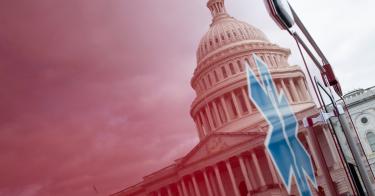Much of the debate over the next phase of COVID-19 response is focused on money: how much we should spend, and where. But there is more we can do on the regulatory side. Easing government rules has been a critical component in the response so far—and it should continue.
Early regulatory relief at the federal and state level has opened access to needed care, expanded the network of providers, and extended new opportunities for individuals and the private sector to respond in innovative ways. In this next round, Congress should build on this early success.
First, lawmakers should look to make certain legislative and regulatory changes permanent. The administration and Congress have taken unprecedented steps to suspend or relax a number of requirements in response to the COVID-19 emergency. For example, providing seniors greater access to telehealth services through Medicare has been invaluable in isolating COVID-19 patients from others. Many of these changes are temporary, but should become the norm.
The list of administrative rules now waived includes certain telemedicine requirements; certain provider licensure requirements to expand access to providers; certain scope-of-practice requirements to allow a broader group of providers to offer services; and certain physician self-referral and facility requirements to increase access. Flexibilities to state Medicaid programs have also been extended. Congress should review and codify those actions that remove artificial barriers to choice and competition.
The same holds true at the state level. Governors and state legislatures have used their power to waive regulations during this emergency. Regulatory changes related to broadening access to telehealth in the state, expanding access to providers through modifications to licensure and scope-of-practice rules, and suspending facility restrictions such as certificate-of-need laws, are all worth making permanent at the state level.
>>> Health Care Choices Resources Kit
In addition to making temporary changes permanent, Congress should take additional legislative actions to further help in the response to the COVID-19.
First, Congress should ensure individuals have access to as many coverage options as possible. Lawmakers should codify the administration’s actions related to association health plans, short-term limited duration coverage, and health-reimbursement arrangements. These all give individuals and families more options, ones that are especially important if they have lost or are at risk of losing their jobs.
Another helpful step: expanding the flexibility for Health Savings Accounts. This would include, for example, removing the requirements that HSAs be linked to a high-deductible health plan, increasing the contribution levels, broadening the allowable use of those savings, and allowing HSAs to be use conjunction with other delivery models, including direct primary care arrangements and health care sharing ministries. These changes would increase the availability, access and use of these accounts so that patients have greater flexibility to pay for needed health care services.
Congress should also lift the moratorium on physician owned hospitals. Hospital capacity is critical for treating COVID-19 patients, as well as for ensuring other patients can receive care. Ending the Obamacare moratorium on physician-owned hospitals would remove the artificial restriction on the supply of facilities and expand critical access to care.
This pandemic has elevated the debate over health care reform as the country tries to grapple with the best way to deliver care to its citizens. Early lessons have shown that a state-by-state approach recognizes that the circumstances on the ground in New York are different those in Wyoming. We have also seen that a roll-back of regulatory roadblocks empowers the private sector to respond and innovate, and that health care providers on the frontlines are the best situated to know how best to deliver care to their patients.
Congress should apply these lessons as it takes on longer-term health care reforms.
This piece originally appeared in RealClear Health




